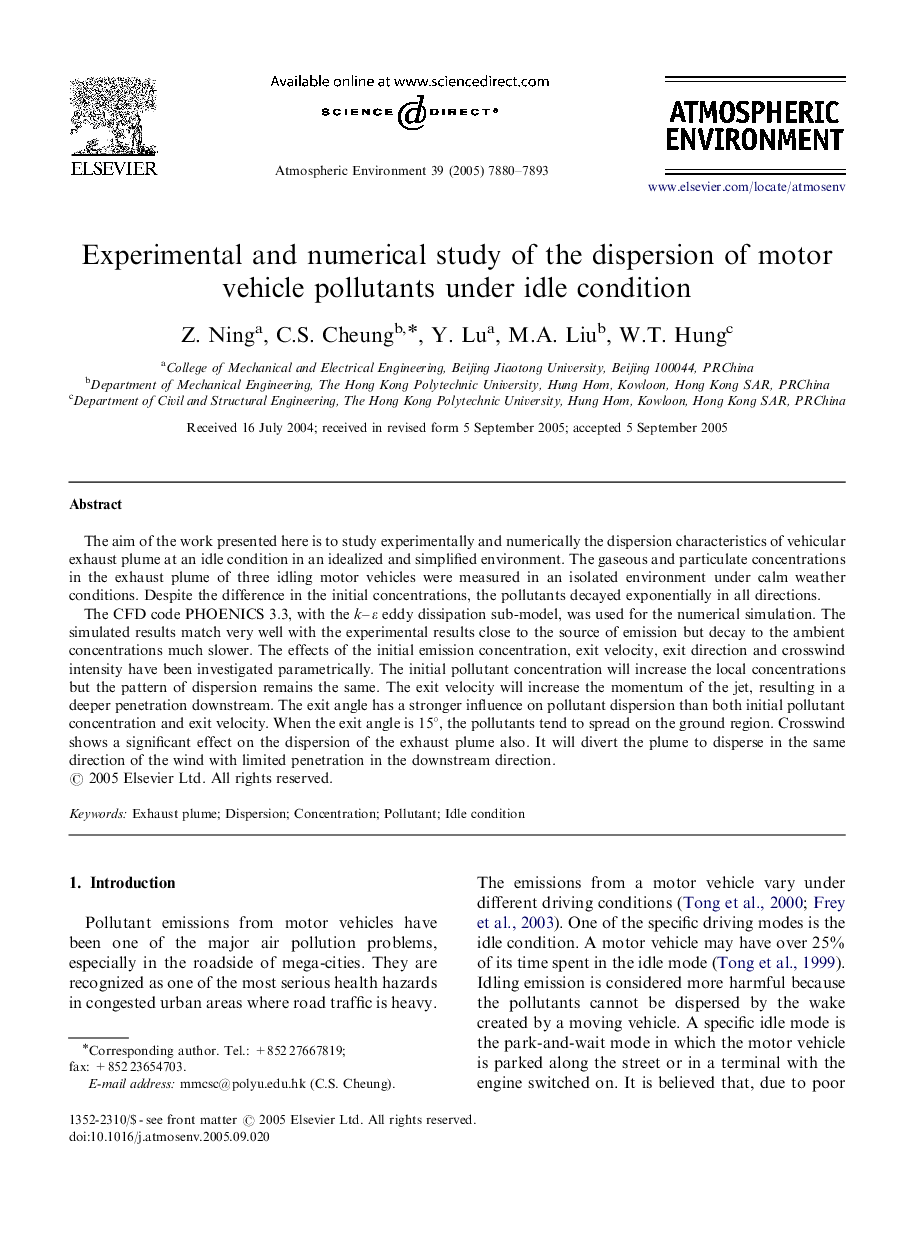| Article ID | Journal | Published Year | Pages | File Type |
|---|---|---|---|---|
| 4444418 | Atmospheric Environment | 2005 | 14 Pages |
The aim of the work presented here is to study experimentally and numerically the dispersion characteristics of vehicular exhaust plume at an idle condition in an idealized and simplified environment. The gaseous and particulate concentrations in the exhaust plume of three idling motor vehicles were measured in an isolated environment under calm weather conditions. Despite the difference in the initial concentrations, the pollutants decayed exponentially in all directions.The CFD code PHOENICS 3.3, with the k–ε eddy dissipation sub-model, was used for the numerical simulation. The simulated results match very well with the experimental results close to the source of emission but decay to the ambient concentrations much slower. The effects of the initial emission concentration, exit velocity, exit direction and crosswind intensity have been investigated parametrically. The initial pollutant concentration will increase the local concentrations but the pattern of dispersion remains the same. The exit velocity will increase the momentum of the jet, resulting in a deeper penetration downstream. The exit angle has a stronger influence on pollutant dispersion than both initial pollutant concentration and exit velocity. When the exit angle is 15°, the pollutants tend to spread on the ground region. Crosswind shows a significant effect on the dispersion of the exhaust plume also. It will divert the plume to disperse in the same direction of the wind with limited penetration in the downstream direction.
